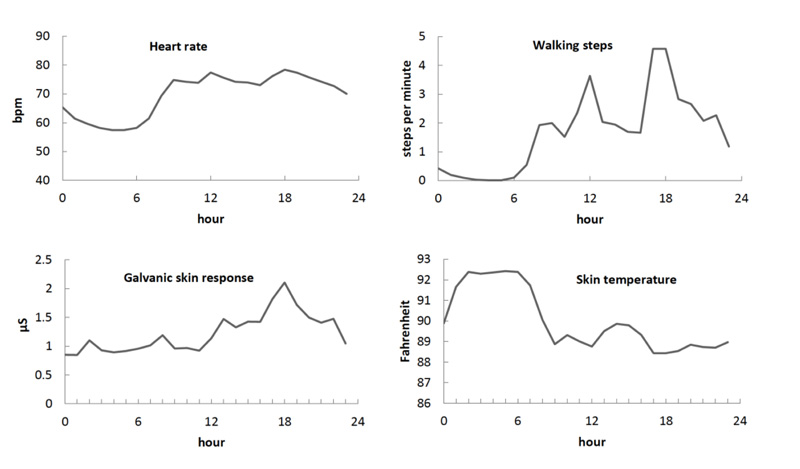
Gungor, Semih Rana, Bhumika Fields, Kara Bae, James J Mount, Lauren Buschiazzo, Valeria Storm, Hanne
Cpt code for galvanic skin response skin#
All rights reserved.Ĭhanges in the Skin Conductance Monitor as an End Point for Sympathetic Nerve Blocks. Investigations of skin responses, which parallel certain renal responses, may aid understanding of epithelial- sympathetic nervous system interactions during cold and heat stress. This model appears to mimic aspects of the renal responses. This model utilizes skin responses to thermal stress, involving 1) increased skin sympathetic nerve activity (SSNA), decreased skin blood flow, and suppressed eccrine epithelial transport during cold stress and 2) increased SSNA, skin blood flow, and eccrine epithelial transport during heat stress. Because kidney responses are very difficult to study in humans in vivo, this review describes and qualitatively evaluates an in vivo human skin model of sympathetically regulated epithelial tissue compared to that of the nephron. Hyperthermia extends these directional changes, until heat illness results. During mild heat stress, RSNA is increased, renal blood flow is decreased, and epithelial transport is increased consistent with a sympathetic stress coupled with a central volume unloaded state. Hypothermia decreases RSNA, renal blood flow, and epithelial transport. During mild cold stress, RSNA spectral power but not total activity is altered, renal blood flow is maintained or decreased, and epithelial transport is altered consistent with a sympathetic stress coupled with central volume loaded state. Thermal stress is a profound sympathetic stress in humans kidney responses involve altered renal sympathetic nerve activity (RSNA), renal blood flow, and renal epithelial transport.

Renal sympathetic nerve, blood flow, and epithelial transport responses to thermal stress. Mean SSR latencies of lower extremities were found significantly longer than control group (p nervous system involvement in cases with hyperthyroidism. In all the control subjects SSR could be obtained, while from the lower extremities of 4 cases with hyperthyroidism (18.0%) SSR could not be elicited. Ages of the cases with hyperthyroidism and controls ranged between 15-65 years (mean: 46.7 +/- 15.0 years) and 24-62 years (mean: 39.6 +/- 9.8 years) respectively (p > 0.05). SSR was recorded with the contralateral electrical stimulation of the median nerve (of the upper extremities) and tibial nerve (of the lower extremities) with active electrodes placed on palms and soles and reference electrodes attached on the dorsal aspects of hands and feet. The results were compared with those of 20 healthy controls.

Twenty-two newly diagnosed cases with hyperthyroidism were included in the study. The aim of this study was to investigate the disorders of sympathetic nervous system in patients with hyperthyroidism using sympathetic skin response (SSR). Gozke, E Ozyurt, Z Dortcan, N Ore, O Kocer, A Ozer, E Sympathetic skin responses in patients with hyperthyroidism.

TENS has an inhibitory effect on elicited SNS responses when compared with sham TENS control group. However there was no significant latancy difference between two groups (p>0.05 ). A significant amplitude difference was found between TENS and sham TENS group both in right and left hand (p=0.04, p=0.01, respectively).

The mean values of latency and peak-to-peak amplitude of five consecutive SSRs were calculated. Fifty-five healthy volunteers received either: (i) 30minutes TENS (25 participants) (ii) 30minutes sham TENS (30 participants) and SSR test was performed pre- and post-TENS. This study examined the effects of transcutaneous electrical nerve stimulation (TENS) on the sympathetic nerve system by sympathetic skin response test. Okuyucu, E Esra TurhanoÄŸlu, AyÅŸe Dicle Guntel, Murat Yılmazer, Serkan SavaÅŸ, Nazan MansuroÄŸlu, Ayhan ĭoes transcutaneous nerve stimulation have effect on sympathetic skin response? The sympathetic sudomotor conduction velocity (SSFCV) was measured in 8 subjects by simultaneously recording the SSR from the hand and. SSRs were obtained using electrical and laser stimuli delivered to the wrist controlateral to the recording site. Twenty healthy subjects were investigated. The objective of this study was to evoke sympathetic skin responses (SSRs) in healthy subjects using laser stimulation and to compare these responses with those induced by conventional electrical stimuli. Sympathetic skin response evoked by laser skin stimulation


 0 kommentar(er)
0 kommentar(er)
